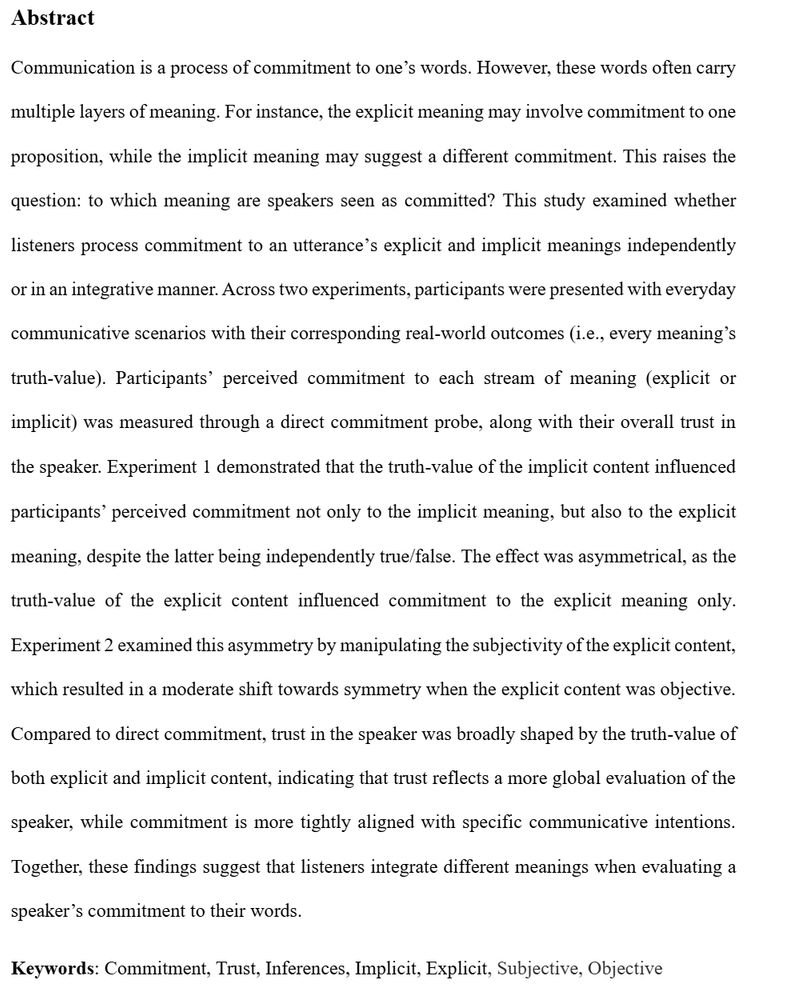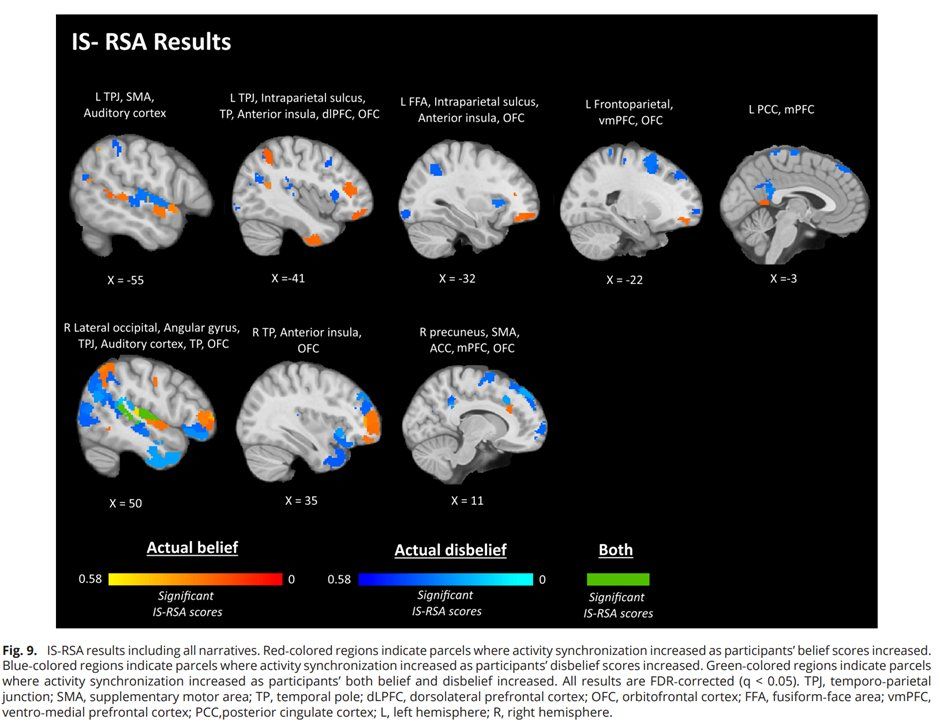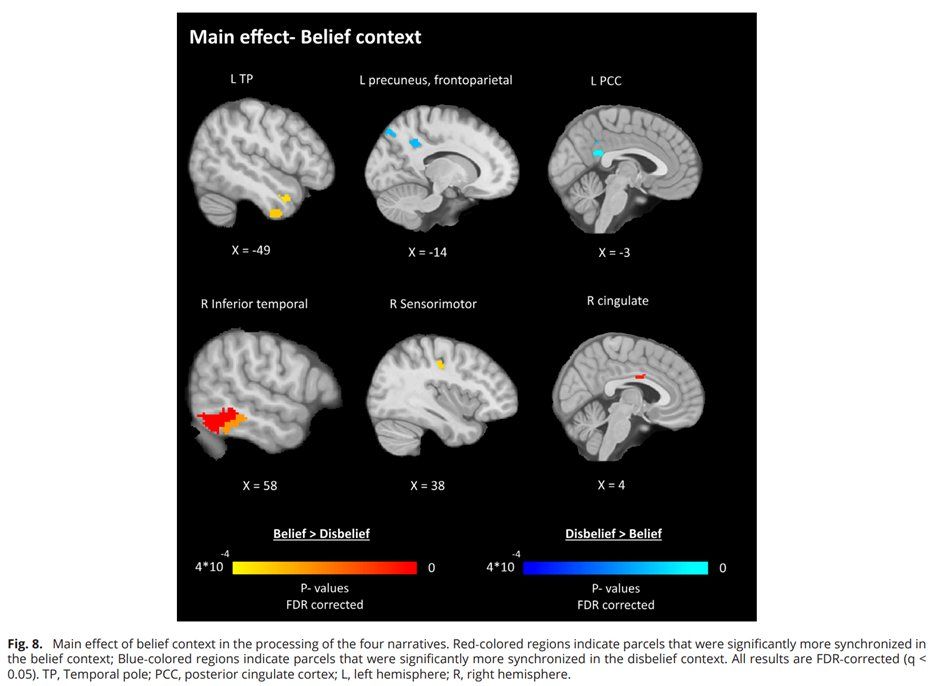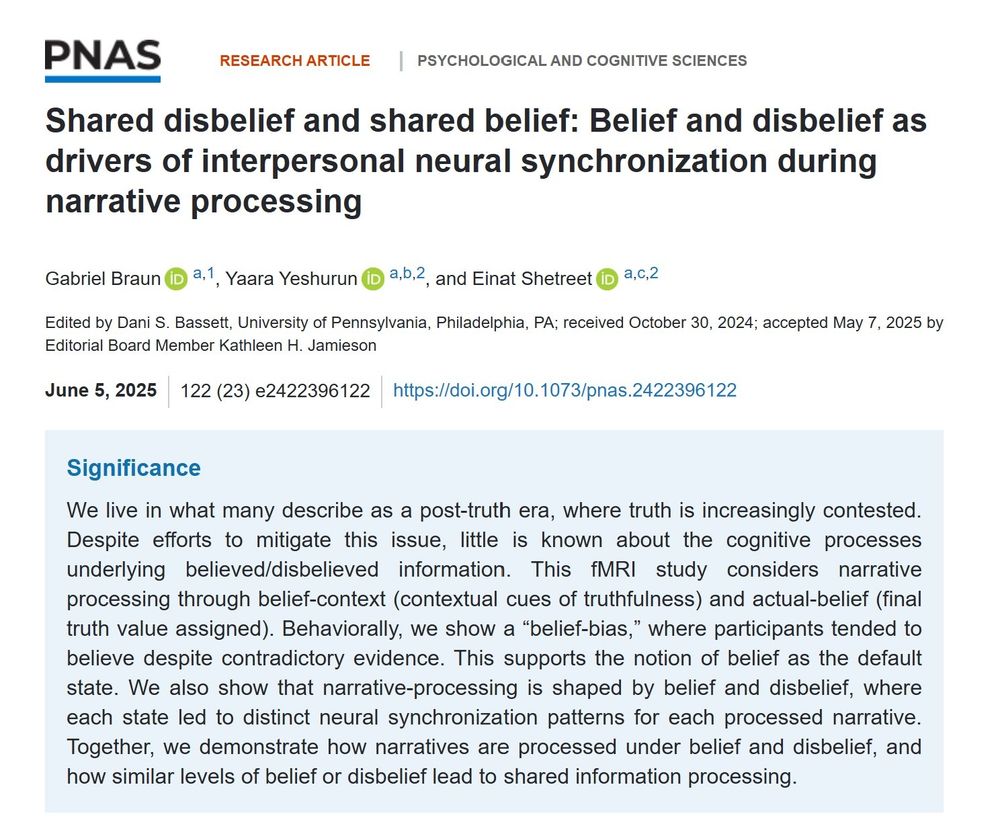
Gabriel Braun
@gabrielbraun.bsky.social
Finally arrived on Bluesky.
Neuroscience PhD student at Tel Aviv University. Social neuroscience, trust/belief, misinformation, language and communication. Film enthusiast. 🏳️🌈
https://gabrielbrauncog.github.io/
Neuroscience PhD student at Tel Aviv University. Social neuroscience, trust/belief, misinformation, language and communication. Film enthusiast. 🏳️🌈
https://gabrielbrauncog.github.io/
New preprint alert! 🐥
"Continued memory for misinformation, continued trust in the sources that spread it: The effects of language and self-correction".
In my completely unbiased opinion, it’s a very nice and interesting read!
Full paper at: doi.org/10.31234/osf...
"Continued memory for misinformation, continued trust in the sources that spread it: The effects of language and self-correction".
In my completely unbiased opinion, it’s a very nice and interesting read!
Full paper at: doi.org/10.31234/osf...

July 15, 2025 at 11:29 AM
New preprint alert! 🐥
"Continued memory for misinformation, continued trust in the sources that spread it: The effects of language and self-correction".
In my completely unbiased opinion, it’s a very nice and interesting read!
Full paper at: doi.org/10.31234/osf...
"Continued memory for misinformation, continued trust in the sources that spread it: The effects of language and self-correction".
In my completely unbiased opinion, it’s a very nice and interesting read!
Full paper at: doi.org/10.31234/osf...
NEW preprint!
We study cases with several meanings (e.g., replying “I’m feeling sick” to “Wanna go to the beach?”). How does being truthful in one meaning, but maybe not another, shape perceived commitment to each meaning and overall trust in a speaker?
doi.org/10.31234/osf...
We study cases with several meanings (e.g., replying “I’m feeling sick” to “Wanna go to the beach?”). How does being truthful in one meaning, but maybe not another, shape perceived commitment to each meaning and overall trust in a speaker?
doi.org/10.31234/osf...

June 28, 2025 at 4:26 PM
NEW preprint!
We study cases with several meanings (e.g., replying “I’m feeling sick” to “Wanna go to the beach?”). How does being truthful in one meaning, but maybe not another, shape perceived commitment to each meaning and overall trust in a speaker?
doi.org/10.31234/osf...
We study cases with several meanings (e.g., replying “I’m feeling sick” to “Wanna go to the beach?”). How does being truthful in one meaning, but maybe not another, shape perceived commitment to each meaning and overall trust in a speaker?
doi.org/10.31234/osf...
Neural synchrony associated with actual belief revealed broader patterns. High belief and high disbelief led to distinct activation patterns, which were unique to each narrative. This suggests shared interpretations shaped by how much participants believed (or disbelieved). 5/6

June 9, 2025 at 7:00 PM
Neural synchrony associated with actual belief revealed broader patterns. High belief and high disbelief led to distinct activation patterns, which were unique to each narrative. This suggests shared interpretations shaped by how much participants believed (or disbelieved). 5/6
Now to brain processing: context shaped neural synchrony. Some regions synced more in belief contexts, others in disbelief, but never both. Disbelief boosted synchrony in cognitive control regions (Exp 1) + DMN (Exp 2, pic), while belief was focused in the DMN (Exp 2, pic). 4/6

June 9, 2025 at 7:00 PM
Now to brain processing: context shaped neural synchrony. Some regions synced more in belief contexts, others in disbelief, but never both. Disbelief boosted synchrony in cognitive control regions (Exp 1) + DMN (Exp 2, pic), while belief was focused in the DMN (Exp 2, pic). 4/6
For my first BlueSky post I want to share this freshly published paper in PNAS @pnas.org!
We show how belief and disbelief shape narrative processing in the brain, not just as opposites of a continuum, but as distinct effects, including a cool truth/belief bias.
www.pnas.org/doi/10.1073/...
We show how belief and disbelief shape narrative processing in the brain, not just as opposites of a continuum, but as distinct effects, including a cool truth/belief bias.
www.pnas.org/doi/10.1073/...

June 9, 2025 at 6:57 PM
For my first BlueSky post I want to share this freshly published paper in PNAS @pnas.org!
We show how belief and disbelief shape narrative processing in the brain, not just as opposites of a continuum, but as distinct effects, including a cool truth/belief bias.
www.pnas.org/doi/10.1073/...
We show how belief and disbelief shape narrative processing in the brain, not just as opposites of a continuum, but as distinct effects, including a cool truth/belief bias.
www.pnas.org/doi/10.1073/...

